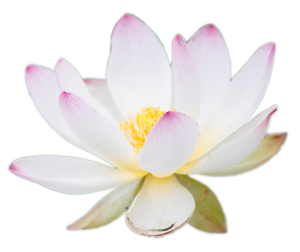Introduction to Postural Restoration
Postural Restoration evolved as a study of human biomechanics. This approach to healing is holistic and integrative. Clinically proven and scientifically based, Postural Restoration provides tools to evaluate underlying cause of pain, dysfunction and slow recovery from trauma. Treatment using Postural Restoration therapeutic activities has produced dramatic relief from chronic as well as acute conditions. These therapeutic activities reposition the musculoskeletal system, correct movement imbalance, restore normal tonicity to muscles and strengthen efficient, balanced, functional activity. Postural Restoration empowers you to maintain your optimal health and vitality in daily life and sports, and helps you avoid injury.
Asymmetry
Postural Restoration recognized that humans are, by design, asymmetrical. Asymmetry facilitates our movement. Organ placement contributes to asymmetry. In the lower trunk the large, heavy liver is situated on the right while a smaller, lighter spleen is in a similar location on the left. Our right lung has three lobes, the left has only two, to accommodate the heart in our left upper trunk. The right diaphragm is larger and better positioned for respiration than the left diaphragm. Muscle attachments of the diaphragm to the ribs are thicker on the right. The right and left hemispheres of our brain govern different functions.
The majority of people worldwide are right handed. Our man made environment accommodates, even facilitates, right hand reach activity. The muscles that make up our right dominant movement patterns are used much more frequently and become much stronger than the same muscles of the non-dominant pattern. Even if you are left-handed you must live in a right-handed world.
Consequently, we all have the tendency to stand on our right leg and reach with our right arm. This reaching results in upper trunk rotation to the left. Consider how you open a door, reach for your cup, or brush your teeth. Often, people who are left-handed for fine motor activity use the right hand for power functions such as throwing. This dominant patterning is most useful! We don’t have to pause to consider which hand we will use to open the door. The pattern facilitates automatic activity, making life a bit simpler. Athletes thrive by strengthening powerful asymmetrical patterns. The downside of asymmetry is that our lifestyle – often sedentary and or filled with repetitive motion – reinforces our pattern so much that we can no longer move out of it. We lose the ability to balance our movement for example: to shift into our left hip and reach with the left hand. Although we walk with both legs, our center of gravity stays over the right hip. Although we have two lungs, we rely more heavily on the right. This one sided imbalance in activities that require alternate, reciprocal movement – such as walking, breathing and chewing – often results in abnormal stress, unequal wear and tear, dysfunction and pain.
3 Dimensional
As 3 dimensional beings, we function in 3 planes of motion: front to back – like taking a bow, side to side like climbing a ladder and in rotation as with twisting to see what’s behind us. Most healthy human movements take place in all three planes.
As asymmetric 3 dimensional beings, the spine orients to the right and we stand on the right leg. The upper trunk rotates back to the left in order to face straight ahead. In so doing right side bending occurs bringing the right ribs a bit closer to the right pelvis and the left ribs a bit further way from the left pelvis. In this position the right trunk muscles shorten and tighten, the left stretch and lengthen. The left abdominals thereby lose their optimal ability to anchor the left lower ribs and the left pelvic crest. The left pelvis rolls forward and inward, the left ribcage elevates and flares. In the front to back plane of motion there is excessive tightness of the back and overstretch of the abdominal regions. In the side-to-side plane of motion, structures on the right are generally too close together and structures on the left are generally too far apart. Finally, with these movement planes diminished, we have difficulty moving in a healthy way in the third plane of rotation at all. Each of these movement disorders can lead to unhealthy stress, chronic injury and pain.
Breathing
In this 3 dimensional, asymmetric configuration the respiratory diaphragm (our primary muscle for inhalation) becomes poorly positioned for healthy breathing. Without efficient function of our primary, low energy breathing system, the diaphragm, we rely more heavily on our auxiliary, back up system- especially the helper muscles of the neck to get enough air into our body. Usually reserved for higher oxygen demand – as when we are running a marathon – the neck muscles become overactive, unable to relax. This activity triggers the sympathetic nervous system – our fight or flight, high alert system. In a constant state of stress, we are restless, unable to relax, unable to sleep deeply. I this vulnerable state, it does not take much to push us over the edge – whether physical, environmental, emotional or mental stress.
How Postural Restoration Can Help
The Postural Restoration therapist initiates a process of rehabilitation that begins with repositioning. Repositioning therapeutic activities are carefully constructed exercises to restore neutral alignment to the musculoskeletal system.
Results can be immediate or may take several sessions to achieve. Repositioning exercises incorporate breathing techniques to restore normal, efficient respiration. Repositioning exercises also teach the person how to feel the activation of corrective postural muscles.
Once neutral alignment is achieved, it must be maintained and integrated into the movement patterns we use in daily life activities. A personalized exercise program is designed to progress strengthening from lying to sitting to standing and finally back into upright movement in a more balanced way.
Often, the aches and pains and movement limitations previously experienced were the result of an imbalanced asymmetrical pattern. These pains drop away as more balanced, more efficient and less stressful muscle activity is restored. In some cases, true pathology may have developed, such as joint breakdown, muscle tears and adhesions and ligament strains. These will become evident and appropriate treatment can be more accurately determined and applied.
Postural Restoration techniques create a more balanced/less stressed physical foundation for life activities, sports activities and for rehabilitation following trauma or surgery. These techniques empower you to self maintain your optimum function and to enjoy an active life.



